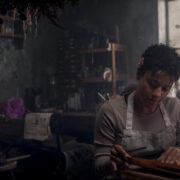Toronto International Film Festival 2017 Report Part 7: Finis For Another Year
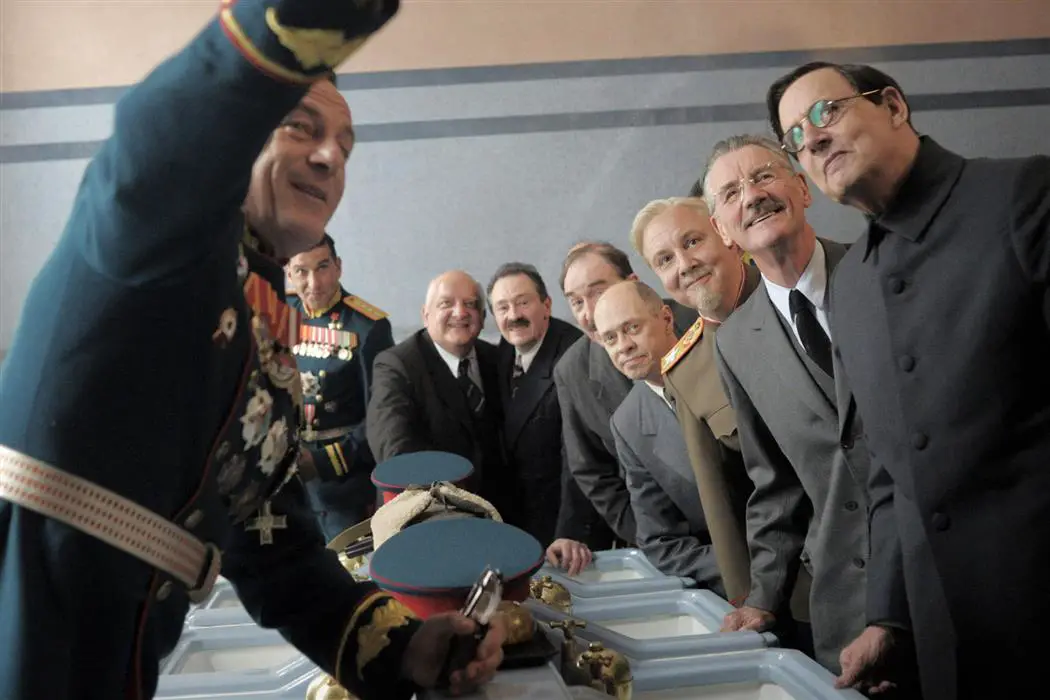
Tomas is a chronic cineaste who studied English literature in…
Day Ten began with a screening of Alexander Payne’s Downsizing, which took place at Roy Thomson Hall. Now, this is a venue which I’d been actively avoiding since 2011, because of all the “converted” venues, Roy Thomson is the one that gets the most flak from attendees. The screen used is not especially big. The seating plan is not conducive to bringing an optimal viewing experience (especially for those forced to hike up to the rafters). And the sound system is the most muffled I’ve ever heard, probably because of the way the hall is designed. This year, TIFF also introduced assigned seating to both this venue and the Princess of Wales, meaning that you can no longer sit wherever you want. So I was stuck in the very front row, on the aisle closest to the exit but looking at the screen from an extremely slanted angle. The only upside was unrestricted legroom, and that’s it.
I tell you this because the awkward angle and the abysmal sound could have been contributing factors as to why I didn’t enjoy the film. I would never in a million years willingly choose to watch a film like this, and the experience confirms that my avoiding Roy Thomson like the plague in prior years was a good call. However, I could do nothing about it: I was assigned the damn seat and had to live with it. I watched Downsizing with increased attentiveness. I gathered my thoughts as I left. And, thinking back, even if I had been sitting in the best seat in the house, with the audio as clear as a bell, I still would’ve come to the same conclusion: this one’s a stinker.
Why? Well, here’s the review for your consideration:
Downsizing (Alexander Payne)
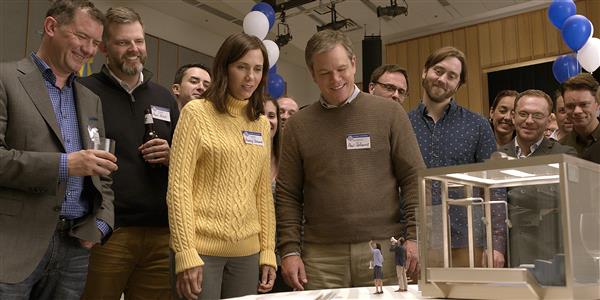
The idea behind Downsizing is actually clever. Norwegian scientists discover a way to shrink people to five-inch specks, and suddenly an answer to the environmental crisis presents itself: smaller people, smaller ecological footprints, smaller risk of overpopulation. Et voilà, sustainability is in sight, the planet is no longer in danger of falling to pieces, and the human race can continue prospering as before. And so, more and more people began to “downsize.” For the planet, though? Well, not quite. It transpires that, when you downsize, your assets end up doubling in Miniature World (or LeisureLand, in the film’s diegesis), so luxuries that were once unattainable can now be freely got. Climbing the social ladder is a cinch: just shrink yourself down to nigh-high and the good life is all yours.
Matt Damon’s character, Paul Safranek, takes the plunge, and I will say that the downsizing procedure he undergoes is an amusing little sequence that could’ve been pulled from a Spike Jonze feature. All his hair has to be shaved off, the fillings in his teeth have to be extracted, and if you’ve seen the trailer, he and the other downsized characters get to be gently scooped up with spatulas and placed on their own miniature gurneys after the process is completed. This, along with the numerous sight gags involving miniature people holding normal-sized objects like saltine crackers and flower buds, is where Alexander Payne gets things right. Milk it for all it’s worth, I thought to myself. Keep this a zany satire. It may be ridiculously on-the-nose, but at least you’ll be consistent.
Alas, Payne and co-writer Jim Taylor whiff it. As soon as the technical process of downsizing is excavated, they naturally wish to offer a critique of the canting white privilege that has selfishly turned an environmental solution on its head. But the best they can do to perpetuate the zaniness is introduce a few “zany” characters to keep Damon’s character company, including a one-legged Vietnamese activist-turned-cleaning woman (Hong Chau) and a Serbian sleaze-bag (Christoph Waltz). They are his shoulder angel and devil, respectively; one shows him how he can continue making a positive difference in miniaturized form, while the other encourages submission to hedonistic impulses. Paul eventually steers himself onto the right path, but oh boy, the film has to go all the way to Norway’s fjords and a miniaturized cult preparing for doomsday to make it happen.
As the film goes on, in other words, it loses focuses. Payne’s critique disappears in the various detours and distractions that plump up the narrative, leading to an ending that not even the people around me were sure they completely understood. The humor of the last half falls squarely on Chau and Waltz (Damon’s performance is so devoid of personality that he’s almost a nonentity in the grand scheme of things), and while both do their very best to get through, there are other problems to be found.
Waltz is a strutting peac*ck with a holster full of wisecracks, but there is very little substance to be found in the character itself. Meanwhile, Chau’s Ngoc Lan is a touch more complex personality-wise, brusquely efficient as she tries to help the less fortunate and laden with compelling monologues that are also tactically manipulative. She’s quite the scene-stealer, but the downside to that is how much her foreignness is played up. She speaks in a painfully forced Pidgin English, for instance, and in one scene inadvertently overdoses a sick friend on expired painkillers and nonchalantly shrugs off the death because, well, she is supposed to represent a typical Asian battle-axe. Her inability to transcend her Otherness becomes her defining trait, no matter how much heart Chau throws into the performance (and she throws in plenty).
This is also one of Payne’s least attractive films from a technical perspective. It possesses a very washed-out ‘90s look to it, none of the colors popping as they should, and it becomes hard to watch after a while. It feels cheap and small, dated and unadventurous. Then you factor in Rolfe Kent’s twee score, and it becomes almost unbearable. I don’t usually take an instant dislike to scores, and most don’t make big impressions unless they’re really integral to building the film’s atmosphere. Kent’s, however, is too much, too fast. It’s one of the scores that feels like a cavity rotting away at your tooth, piling on a faux sense of quirk and wonderment that leaves one po-faced instead of cheerful. I’m sure any other score would have worked better.
Actually, I’ll be honest: most elements here could have worked better with different tacks. Payne’s satire had potential, and much of the first half leads you to believe he’s pulled it off. Why he and Taylor settled for that patchy second half is a question I can’t answer. Nevertheless, the film goes there, wandering into an abyss of such poor conceptualization that little can be salvaged, and all you can do is throw your hands up in the air.
Disobedience (Sebastián Lelio)
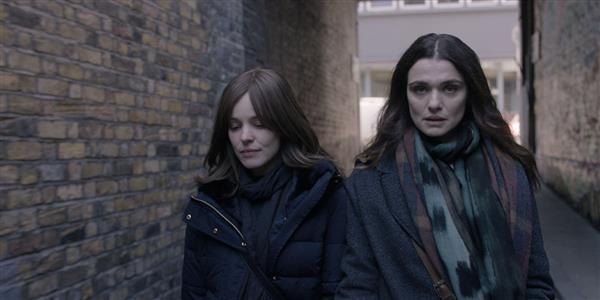
Day Ten ended with a number of twos: here); and it was my second Sebastián Lelio film I saw during the Toronto International Film Festival, the first being here). It was also the second time I lined up at the Elgin/Winter Garden complex, after seeing On Body and Soul the day before. I usually see a lot more films at the Elgin, but this year Disobedience was the only time I got to visit its ornate interior. You’ll know how it looks when you see Guillermo del Toro’s The Shape of Water, though—some scenes were shot there, which also made it the film’s only public screening venue.
Seated in the balcony, the film got off to a distracting start: someone unwisely brought a baby to the screening, and a short verbal argument erupted nearby… whether related to the baby or not, I don’t know. The attendee with the baby valiantly tried to keep the child as quiet as possible, but as many parents know, it’s a fight that can never be won. Furthermore, the baby’s parent audibly began annoying many audience members around us as he or she dandled their child on their lap. Eventually, the baby began to cry, and the parent must have quickly hustled out of the theater because I never heard it again. Lesson learned, I assume.
Babies, fighting, fire alarms, malfunctioning projectors. Over my six years at the festival, I’ve seen it all—or at the very least, heard horror stories from others. You can’t let these things get to you. So, baby or no baby, I kept my attention focused on Lelio’s English-language debut, an adaptation of Naomi Alderman’s 2006 novel which he transferred to the screen with the help of playwright Rebecca Lenkiewicz. English debuts from foreign filmmakers can be risky ventures—just ask Deniz Gamze Ergüven and Haifaa al-Mansour, to name a few. Their films Kings and Mary Shelley dropped at TIFF to very underwhelming reviews, and Lelio’s film could have easily met the same fate.
I’m happy to say that Disobedience is by no means a miss. It’s not quite as assured and transfixing as A Fantastic Woman (or his fourth feature from 2013, Gloria), and its somber grey palette certainly lacks the liberated feel of those films. Color is often used as a significant motif to represent the inner vitality of Lelio’s women, so the sheer absence of it here was something new. Appropriate, though, because liberation in Disobedience is not so easily got. You may dream of it, yearn for it, and throw your arms around the one saving grace in your otherwise dreary existence, yet to be truly free also means to turn your back on everything you’ve ever known about yourself. In a community of Orthodox Jews, it also means walking away from friends and loved ones you’ve known your whole life. It means the kind of solitude that few are prepared for.
Ronit Krushka (Rachel Weisz) made the decision to sever herself from her orthodox faith years before the film takes place. So when her father (Anton Lesser), a powerful rabbi, dies suddenly while giving a sermon, only one person cares to telephone her the news. And her reappearance in Hendon (the film’s setting) is a hard one. Few people show any warmth, and those who do are reluctant to welcome back a black sheep to the fold. The worst indignity is the news that her father left nothing for her in his will—that even in his obituary, she is completely erased from his life.
She was not erased from schoolteacher Esti’s (Rachel McAdams) life, however. Married to Rabbi Krushka’s protégé, Dovid Kuperman (Alessandro Nivola), Esti is the kind of woman Ronit’s father would have wanted his daughter to be: docile and dutiful to the prescriptions of her faith. But, unbeknownst to most, Esti is a renegade in one crucial area. With Ronit’s return home, Esti’s carefully cultivated persona is slowly split in two when it is revealed that she and Ronit were lovers in their youth, and that the feeling between them has not died over the ensuing years. With one look, with one shared drag of a cigarette, a passion thick and fierce begins to re-establish itself: deeply fulfilling for the two women concerned, but an utter crisis for Dovid as he readies for his career as the synagogue’s new rabbi.
Lelio utilizes a measured tempo to establish Ronit and Esti’s relationship, careful to cultivate their differing personalities and allow the natural stiffness and uncertainty of a sudden reunion to play out before delving into their physical and emotional connectivity. Weisz is disarmingly headstrong in her role, ensuring Ronit is a force to be reckoned with while not disallowing her moments of vulnerability. When she learns of her father’s death, for instance, Ronit indulges in a brief self-destructive spree (drinks, a quickie in a rundown washroom, some impulsive ice skating), and Lelio keeps us locked on Weisz’s forlorn gaze for much of the way. If Ronit is a tough nut to crack, Weisz never allows us to forget that haunted look, or the desolation felt behind it.
But mousy Esti is just as challenging a role (if not more so), and McAdams is tremendous in it. The way the character morphs into self-possession and articulacy rests on McAdams’ ability to wring out the obeisant tics that have anchored the character for so long, and she does so with an elegant subtlety. In the beginning, her actions are habitual: her speech, her gait, the way she adjusts her wig—all precise and correct. She has trained herself to accept her life, and she does her best to model her acceptance to maintain the acceptance of her society. With Ronit, she sees new and dangerous possibilities. She craves them. And, in a memorable scene of passionate lovemaking, she demonstrates that craving with the hunger of a lioness. There is, however, fearful doubts and repercussions that cannot be ignored, and McAdams skillfully displays all these conflicts with a virtuoso restraint. The decision she must make is agonizing, but in the end, she resists letting it destroy her.
Nivola, too, is exceptional, especially when Dovid learns the truth from Esti and he must find the proper response to give her. And while the character represents all that Ronit and Esti do not wish to have, he is no villain. Nivola takes the greatest of care to ensure we do not resent Dovid or his way of life, portraying him with just as much emotional turmoil as the female protagonists. That is another lovely facet of Disobedience. For all that it does to show Esti (and, in a way, Dovid) in defeated submission, or Ronit in proud rebellion, their faith—or lack thereof—is not pilloried for any grandiloquent moral. It is fundamentally a journey toward self-actualization that moves forward with tenderness and sympathy rather than ill-conceived suspicion.
Lelio should be commended for bringing these female-driven journeys to us. Whether they deal with aging bodies, queer acceptance, or women negotiating a thruway between their faith and their desires, he is consistent in his empathetic engagement with these lives that burst forth from the rigid boundaries of gender and class, sexuality and belief. Even if Disobedience is not his absolute best effort, it is still successful enough to cement him as one of Chile’s leading voices in this area. If he continues down this path, it won’t be long before international renown grows.
I hope it will.
The Death of Stalin (Armando Iannucci)
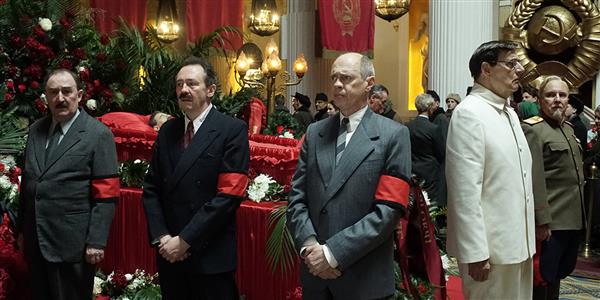
I can’t say that I saved the best for last when speaking of Armando Iannucci’s compared to last year, it was still a much better way to end my festival experience. Like his first film, 2009’s In the Loop, and his irreverently charming TV series Veep, The Death of Stalin shows Iannucci’s knack for skewering the drama of backdoor politics with a sizzling wit and attention to detail. He and production designer Cristina Casali beautifully recreate the red-streaked austerity of the Kremlin in 1953, where infamous despot Joseph Stalin (Adrian McLoughlin) keels over from a brain hemorrhage and dies a few days later.
In the aftermath, his inner circle of government ministers are left in one of two states of action: anxious handwringing or hatching plans to succeed Stalin as leader. The two most ambitious manoeuverers are general secretary Nikita Khrushchev (Steve Buscemi) and security chief Lavrentiy Beria (Simon Russell Beale); the former wishes to chart a new path for the Soviet Union, while the latter is very much intent on continuing Stalin’s legacy of iron-fisted authoritarianism. But before any true power plays can be made, Stalin’s funeral still has to be planned, his neurotic children (Rupert Friend and Andrea Riseborough) appeased, and acting leader Georgy Malenkov (Jeffrey Tambor) demoted to a less powerful position—the last being the easiest feat, perhaps, given Malenkov’s propensity for being an ineffectual nitwit.
While the true evils of Stalin’s reign play second fiddle to the sheer nincompoopery of his cronies, there is nevertheless a wonderful fidelity to the historical record that I admired while watching the film. Yes, some things are anglicized due to the presence of an international cast, and most events are comically heightened to bring out Iannucci’s absurd sense of humor, but the fundamental personalities of the figures portrayed are left intact, and minor touches (like the ministers standing in front of Stalin’s casket during his funeral, or even the insignificant fact that Stalin urinated himself after suffering his hemorrhage) are preserved here. Impressively, Iannucci does not overpower his source (a graphic novel by Fabien Nury and Thierry Robin). Instead, he augments it with farcical flourishes in order to underscore the continuity inherent within the past and present, and how the actions and decisions undertaken by long-dead people can speak to those who are still very much alive.
If The Death of Stalin excels in its historicity, its comic sensibilities end up lying mostly fallow. There are two reasons for this. Firstly, a lot of the jokes are too familiar to gain traction. If I told you there’s a scene where all the ministers struggle to move Stalin’s unconscious body to his bed, I’m sure you wouldn’t be surprised. Iannucci either does not take enough risks with his humor, or it rests in an uneasy state of being just on the edge of risqué, leading to a state of only mild satisfaction. I’m sure I’m not the only one who longed for a character like Peter Capaldi’s Malcolm Tucker from In the Loop, spewing fabulously inventive invectives at every turn. Capaldi worked because his humor arose from a sense of spontaneity and thwarted expectations, and there’s only dabs of it here and there in The Death of Stalin. One instance that somehow sticks out is when Riseborough’s Svetlana randomly complains about a lamp standing next to her. Nothing ribald, no, but a moment that arrives completely unannounced and therefore feels genuinely amusing because of that. I wish the film had more moments like it.
Secondly, Iannucci relies far too much on predictable patterns to shape his scenes. A few characters will be in a room, their conversation starting out with an ordinary patter until someone lets out a risible remark or does something idiotic. Then the jokes and gags pile on until they crescendo to something outright hilarious. The scene will then resolve itself and the process starts all over again. Of course, sometimes there are variations, and when they appear, they are welcome. But all too often I felt scenes were blurring into each other, being played and replayed ad nauseam. And because of this, it became harder and harder to laugh at the nonsensicality playing out in front of me.
Just because The Death of Stalin is not Iannucci’s funniest or most consistent work does not mean it’s a total letdown, however. I continue to marvel at the care he takes to bring a true sense of historical accuracy to what could have been a complete reimagination of the past à la Monty Python and the Holy Grail (though Michael Palin does appear here as First Deputy Premier Vyacheslav Molotov). The ensemble is also reliably superb, with British and American stars and character actors sharing and stealing spotlights left and right until nearly everyone has won your heart in some shape or form. If the laughs aren’t always there, the look and feel of it certainly is. For me, it was a fine way to end off TIFF 2017.
Toronto International Film Festival: Conclusion
With that, I now conclude my TIFF coverage for this year. In total, I wrote 38 full-length reviews for Film Inquiry in the span of a few weeks, which is a lot for one person to hash out all by his lonesome. I was more than happy to do it, though. I previewed a healthy slate of new films, with many of them wowing me, and now I cannot wait to hear what everyone else thinks of them. I got a taste of the press run and how taxing it can end up being, and I have a new appreciation for the people who do this several times a year. Plus, I was able to further hone my skills as a writer, which is always beneficial if you want to make this a career. I lost some sleep, my right leg started to hurt toward the end, and I saw very little sunshine during my eleven days of the Toronto International Film Festival, but I have no regrets. It was a whirlwind I’d love to experience again.
What could I do differently? Certainly schedule less films the next time around (as originally I had wanted to see fifty… definitely too ambitious a goal). Hopefully have access to more screeners and pre-festival screenings, which would afford me even more flexibility. Actually meet people, either in lines or elsewhere. It’s something I’m not very good at, admittedly, but it would make the festival experience all the more fulfilling if I could interact more with likeminded others who love the cinema, as well as discussing it. And maybe interview a person or two. Again, not something I’d necessarily be good at, yet it would be a valuable step forward anyway.
How could the Toronto International Film Festival improve? Well, for starters, it can institute better quality control over what’s programmed. If you have to toss superlative arthouse fare for mediocre biopics and vanity projects, then you’re doing it wrong. Cutting the number of films doesn’t matter if it means denying screens to deserving filmmakers, and there was a definite feeling that that was being done this year.
Chaotic lines and severely delayed start times were also unusually prevalent this year, especially at the Scotiabank. I don’t know if there is a quick fix for this, but keeping things running smoothly needs to be more of a priority next year. Perhaps losing two venues (Isabel Bader Theatre and the Hot Docs Ted Rogers Cinema) was actually a mistake, because at least they prevented the over-concentration of attendees. Now that the Scotiabank has absorbed pretty much all the small indies, documentaries and foreign titles that used to play at those venues (in addition to hosting all press and industry screenings), it has led to more people being in one place at one time—thus more overcrowding and significant delays.
Finally, TIFF really needs to carve out an identity other than being “The Official Start of Oscar Season.” If this is the People’s Festival, don’t keep hiking ticket prices, as it gives it the air of an exclusive club that only the wealthiest can attend. Don’t shunt the arthouse lovers and foreign film connoisseurs off to the sidelines in favor of those wanting to see films with the biggest stars. Instead, make it a festival that’s accessible to all. Curate and cultivate the programmes so that they tell a story and are cohesive, rather than cramming together films under the vaguest of guidelines (with the exception of Masters and Wavelengths, which unsurprisingly have also been the most reliable in terms of quality). In a word, don’t let this festival become a commercialized sideshow. Under the gloss, there is a festival to be truly proud of, and all it needs is more concrete shaping, as well as a more intimate devotion to the people who make it thrive.
Thank you for reading these dispatches. I had a blast working on them, and I hope you found my writing worthwhile. I’m already excited to do it all over again next year, and if I’m still here (which I’m sure I will be), I’ll definitely continue giving you the lowdown of my experience. Until then, I’ll be writing reviews and other stuff for Film Inquiry throughout the year, so do keep an eye out if you liked what I had to offer.
And finally, my favorite performances from the festival. Don’t be surprised if a few of these supremely talented individuals receive Oscar nominations for their work—they’d be completely deserving: Timothée Chalamet, Armie Hammer and Michael Stuhlbarg in Call Me by Your Name; Saoirse Ronan, Laurie Metcalf, Tracy Letts, Lucas Hedges and Beanie Feldstein in Lady Bird (gosh, I love this cast); Frances McDormand and Sam Rockwell in Three Billboards outside Ebbing, Missouri; Ethan Hawke in First Reformed; Brooklynn Prince and Willem Dafoe in The Florida Project; Nahuel Pérez Biscayart in BPM (Beats per Minute); Charlie Plummer in Lean on Pete; Colin Farrell, Nicole Kidman and Barry Keoghan in The Killing of a Sacred Deer; Daniela Vega in A Fantastic Woman; Eili Harboe in Thelma; Maryana Spivak in Loveless; Brady Jandreau in The Rider; Kim Min-hee in The Day After; Julianne Nicholson in Who We Are Now; Rachel McAdams in Disobedience; Billy Howle and Saoirse Ronan in On Chesil Beach; Emma Thompson in The Children Act; Nicolas Cage and Selma Blair in Mom and Dad; Sally Hawkins and Richard Jenkins in The Shape of Water; Maggie Mulubwa in I Am Not a Witch; Hamilton Morris in Sweet Country; Lisa Leplat Prudhomme and Aline and Elise Charles in Jeannette: The Childhood of Joan of Arc; Simon Russell Beale, Jason Isaacs and Andrea Riseborough in The Death of Stalin; Margot Robbie and Allison Janney in I, Tonya; Eglė Mikulionytė in Miracle; Gary Oldman and Kristin Scott Thomas in Darkest Hour; and Jessica Chastain in Molly’s Game.
Phew. Long list. But so many wonderful performances deserving of a mention.
Which of these listed performances are you most excited to see? Let us know in the comments below!
The Toronto International Film Festival ran from September 7th to the 17th.
Does content like this matter to you?
Become a Member and support film journalism. Unlock access to all of Film Inquiry`s great articles. Join a community of like-minded readers who are passionate about cinema - get access to our private members Network, give back to independent filmmakers, and more.
Tomas is a chronic cineaste who studied English literature in university (in both the undergraduate and graduate levels), and hopes to pursue a career in writing. His passion for film began in earnest at the beginning of the 2010s, and since then he's been reveling at the vast horizons of the cinematic landscape like a kid at the proverbial candy store.


